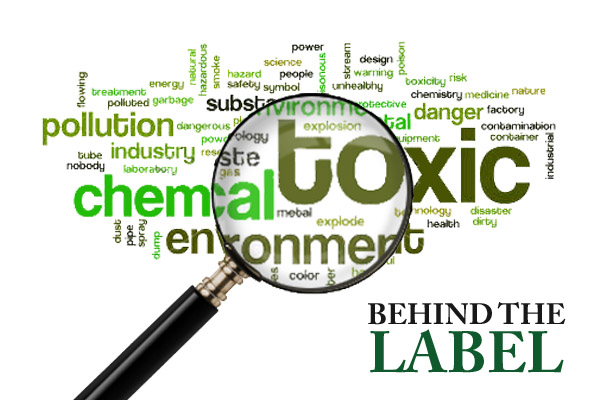Behind the Label: Smokeless Tobacco

Big Tobacco would have you believe that where there’s no cigarette smoke there’s no fire, and so no health issues. Pat Thomas stubs out that misapprehension.
We get an entertaining selection of press releases each week at the Ecologist. Recently, however, amid claims for the greenest 4x4s ever, vegan-friendly breastmilk ice cream and strip-mining with a heart, one stood out.
The purchase of smokeless tobacco firm UST by tobacco giant Altria, maker of Marlboro cigarettes, for a cool $10.4 billion heralded a new era for smokers, one in which they are encouraged to stop inhaling and start sucking, chewing and snorting instead. Anti-smoking campaigns and smoking bans in the UK and US have seen the number of smokers decline. Last month, graphic pictures of throat cancer and rotting teeth began to appear on cigarette packets to show the risks of smoking. The upshot is that tobacco firms are working harder to find new markets for their wares. Enter smokeless tobacco.
Smokeless tobacco products consist of tobacco or a tobacco blend that’s chewed, inhaled or sucked on rather than smoked. Bill Clinton would have approved of the logic – as long as you don’t inhale it doesn’t count, right?
The answer depends, in part, on which type of smokeless tobacco you are referring to. The term ‘smokeless’ covers more than 30 types of tobacco product that can be chewed, sucked or inhaled, but the main types are:
- Chewing tobacco Comes in loose leaf, plugs or twists.
- Snuff Available dry or moist, in loose leaf or in pouches that look like small tea bags. May be placed between the cheek and the gum or inhaled into the nostrils.
- Snus A moist version of snuff containing approximately 50 per cent water. No need to spit it out, which makes it more socially acceptable. It also has the lowest level of nicotine of all the smokeless tobacco products.
- Betel quid A product of India, Africa and Asia, it consists of a dried paste for chewing that often includes tobacco, areca nuts, catechu and scent or flavouring.
The various products on the market differ enormously in terms of their ‘risk profile’. For example, while smokeless tobacco cannot cause lung cancer or emphysema (and there’s no second-hand smoke), it is highly addictive. The International Agency for Research on Cancer concludes that smokeless tobacco products are carcinogenic to humans. The evidence is particulary strong for cancers of the mouth and throat.
Each type of smokeless tobacco has different levels of cancer-causing chemicals. The most dangerous of these is a group of chemicals called tobacco-specific nitrosamines (TSNAs). Nitrosamines are carcinogenic, and some smokeless tobacco contains more TSNAs than is in cigarettes.
Behind the smokeless screen
Data is limited about the carcinogenic effects of smokeless tobacco on organs other than the mouth. Snus is the most widely studied. One study in the journal Epidemiology in 2004 looked at 10,136 Norweigan men over almost a 40-year period, 32 per cent of whom used snus. It showed that users had a 67 per cent greater risk of contracting pancreatic cancer than non-users a 10 per cent greater risk of oral and pharyngeal cancer, a 40 per cent greater risk of oesophageal cancer, and an 11 per cent greater risk of stomach cancer.
Likewise, a 2007 paper in The Lancet that followed more than 125,000 Swedish non-smoking snus-using construction workers for 12 to 26 years. They found no increase in oral or lung cancers compared to non-smokers who did not use any form of tobacco. But the risk of pancreatic cancer was approximately doubled.
Even so, some public health officials argue that because it carries with it a lower rate of these diseases, smokeless tobacco, particularly snus, could be a usefull way to wean smokers off smoking. In truth there isn’t hard evidence to support this. Since 1991, the National Cancer Institute position has been that smokeless tobacco is not a safe substitute for cigarrettes becuase it also causes addiction and disease, including cancer.
However, a 2007 report by the Royal College of Physicians maintained that snus was a potentially useful cessation aid.
It is an interesting marketing notion: encouraging smokers to switch to a smokeless tobacco maintains at least some of a lucrative market (chewing tobacco is unlikely to be on every smoker’s must-have list), while bolstering government figures on the success of ‘stop smoking’ campaigns.
While smokeless tobacco products, with the exception of nasal stuff, are not allowed in the EU (although some inevitably get purchased via the internet), they are widely availible elsewhere, and there is a strong lobby currently trying to change the situation in Europe.
Most of the major smokeless producers have two goals: one is to try and convert smokers to smokeless using products like pouches, focusing on the advantage they can be consumed even if there smoking bans in place; the other is to get young people to use morre smokeless products from the start, employing flashy packaging and an ever-evolving array of flavours. This is already happening in Scandanavian countries, where snus has been available for many years.
It seems incredible that we could be on the verge of a time when under-18s can go into a shop where the can’t buy cigarettes but, because of changes in the legislation and until they can get the real things, may buy a ‘safer’ smokeless tobacco alternative. You live long enough and watch enough corporate shenanigans, nothing much surprises you.
Watch this space.
This article first appeared in the Ecologist November 2008












